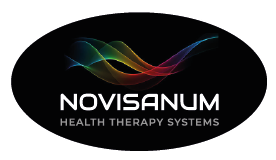Differences in Light Therapy?
Red Light
The shortest of all red + NIR wavelengths, red light (also known as short red light) ranges in length from approximately 600 to 700 nm.
Short red light penetrates your body to a depth of about eight to 10 millimeters, reaching the mitochondria of your skin cells and other cells that are located closely beneath your skin. Red light does not create heat, although you might experience a mild and pleasant warm sensation on your skin during therapy.
Red light is best suited for treating skin conditions, mild inflammation, and accelerating surface wound healing. There are no adverse side effects to short red light. It cannot burn your skin or damage any underlying body tissues.
All wavelengths of red LED light will provide benefits, but wavelengths from 630 to 680 nm demonstrate the most healing power.
Infrared Light
Infrared light is invisible to the human eye. It is the longest form of red light on the spectrum, and it feels hot on your skin (similar to or hotter than sunlight). Infrared light qualifies as light energy, but you can only feel infrared light, not see it. For this reason, it is sometimes referred to as infrared heat. Infrared light is technically classified as thermal energy, meaning that it is heat-producing.
Since the light spectrum is continuous, there is no fixed metric for the exact beginning of infrared light. In general, wavelengths ranging from about 900 to 1400 nm are considered to be infrared.
Infrared light can penetrate up to 2.5 centimeters beneath your skin. This is around three times the depth to which short red light wavelengths can penetrate.
Because of its thermal properties, infrared light has the capability of burning your skin and causing eye or other bodily tissue damage (unlike red light, which is safe for eyes. For this reason, infrared light must be administered carefully and diligently. It is usually used only in more extreme circumstances, not for routine red light therapy.
Infrared light is used mainly to treat serious conditions such as traumatic brain injury, severe pain, Alzheimer’s Disease and other neurodegenerative disorders, and to enhance the effects of chemotherapy during cancer treatment.
Near-Infrared Light
Near-Infrared light occupies the area of the spectrum between short red and infrared light. It is somewhat of a “gray area” in the world of red light but is found to be extremely useful for therapeutic purposes.
Again, because the spectrum is continuous, there is no “magic number” marking the exact beginning or end of NIR light on the spectrum. It is generally agreed upon that NIR light ranges from about 700 to 900 nm in wavelength.
The visibility of near-infrared light varies. It borders on the high end of the red light range and the low end of the infrared light range; therefore, NIR light is visible at the bottom of its range and invisible at the top of its range. It transitions from visible to invisible somewhere near the high end of its range.
NIR light penetrates more deeply into your body than red light, but less deeply than infrared light. NIR light is safer than infrared light because although it borders on the thermal range, its potential to burn your skin or cause deep tissue damage is much lower than that of infrared.
While red light has no harmful side effects but infrared light potentially can, NIR light falls somewhere in between. As long as near-infrared light is administered safely and carefully, however, great benefits can be realized with very minimal risk of adverse side effects.
As with red light, a certain range of NIR wavelengths exhibit greater therapeutic benefits than the remainder. 800 to 880 nm NIR light demonstrates the highest healing potential within its range.
Which Specialized Wavelengths Are Best For What?
First, it is important to understand that each individual is unique, and what works for one person might not be best for another. This applies to specific wavelengths, combinations of wavelengths, and types of devices. No two people are exactly alike, and everyone reacts differently to red light therapy. Utilizing a personalized strategy is best.

